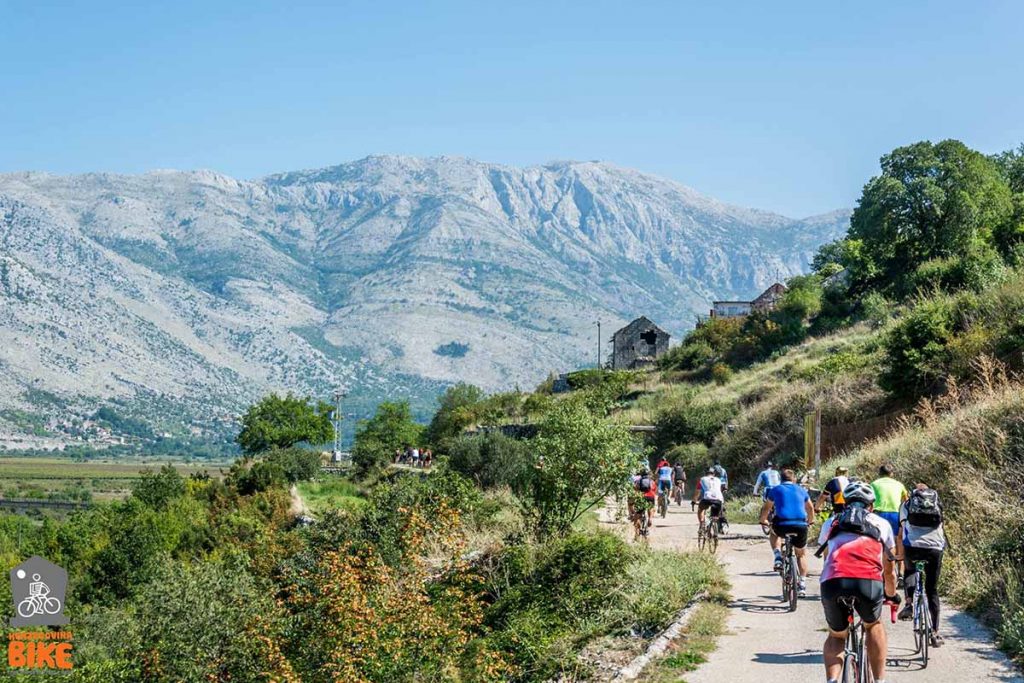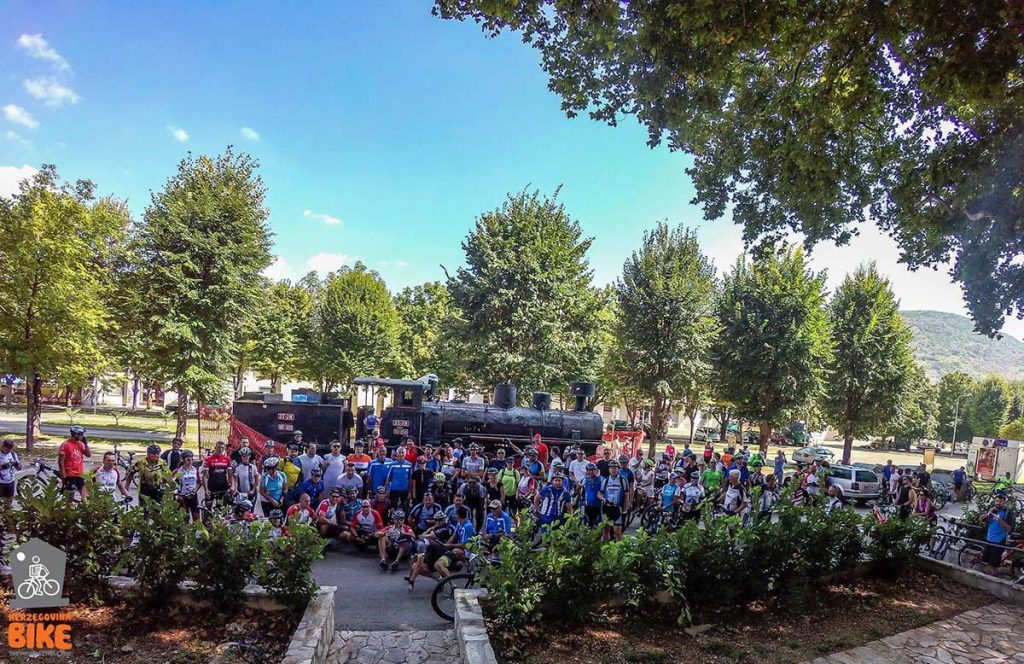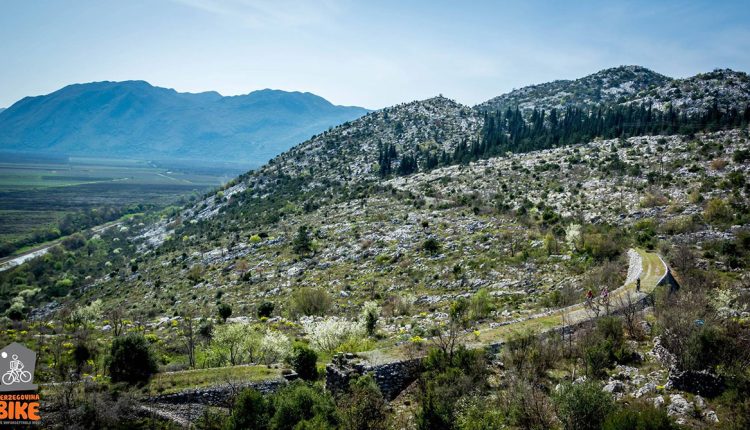
INFORMATION ABOUT CIRO
The historic narrow-gauge railway with a steam locomotive runs from Mostar along the Neretva River, through Čapljina, Popovo polje, Ravno, and near Ivanica, crossing the border with Croatia all the way to Dubrovnik. Construction of the railway began in 1898 and ended in 1901. During its existence, Ćiro connected places in Herzegovina and brought them life, and today the railway has been reconstructed into a bicycle path.
The Austro-Hungarian monarchy, which ruled the territory of Bosnia and Herzegovina at the end of the 19th and the beginning of the 20th century, built a network of narrow-gauge railways (track width 0.76 m). The railways were built primarily as strategic military facilities and they connected the southern Adriatic ports with cities in the hinterland and with Central Europe. The railways in Herzegovina were built as part of the Southern Railway, and the first section of that railway from Metković to Mostar, with a length of 42.4 km , was put into circulation on June 13, 1885. year, while the line from Gabela to Zelenika in Boka Kotorska (Montenegro) is 155.5 km long, with branches from Hum to Trebinje (16.7 km) and Uskoplje to Gruž in Dubrovnik in the Republic of Croatia (16.5 km). , put into operation in 1901. The narrow-gauge railway served people, connecting countries, regions, peoples and cultures. For the peoples from these areas, they were lifelines, they enabled them to have a better life and all kinds of progress, and they left a trace of civilization in the places through which Ćiro drove, roared, beat, whistled and let off steam for decades. he called the trains pulled by a steam locomotive gemišteri (mixed trains), šnelczug (fast trains) and personal (passenger trains). The nickname Ćiro was imposed before the very abolition of the narrow-gauge railways, but it remains recognizable among the people even today.
The narrow-gauge railway or narrow-gauge railway Gabel - Zelenika was discontinued in 1976. During its existence, the narrow-gauge railway changed five state regulations.
SHORT INFO DESCRIPTION OF THE TRAIL
The excursion starts in Zavala, more precisely at the Zavala Inn, where you can taste the local cuisine or maybe you have already spent the night and enjoyed the charms, beauty and calm of waking up in Popovo polje. This is followed by a visit to the Vjetrenica Cave, the largest cave in Bosnia and Herzegovina and the most diverse cave in the world. It is part of the Dinaric Alps mountain range, which is known for its karst and speleological features. After the abundant Vjetrenica, there is an easy bike ride along Popovo polje, which offers beautiful landscapes. While cycling we will visit several Ćira stations, namely: Ćira station in Zavala, Ćira station Grmljani, Ćiro station Poljice, Ćiro station Jasenica Lug, Ćira station Hum, Ćira station Uskopje, and finally Ćira station in Trebinje where we also have a live copy of the Ćiro train .
While cycling, we definitely recommend that you take a break and have a picnic at the Ćiro hum station, because it is located in the middle of the journey and is worth a visit. On this section, expect 45 km of easy cycling from Zavala to Trebinje, with beautiful scenery and a view of Popovo polje. It is important to mention that after Ćiro station Hum you have a separation for Dubrovnik (right) and Trebinje (left), and this time you stick to Trebinje and drive on the left side. For the last 5 km before entering Trebinje, drive on the main highway, which is not heavily trafficked, so you will not have any problems while cycling, and you will still be able to be relaxed. You will notice that the local population is quite friendly and will warmly welcome you, and most of them speak English, so foreigners will not have any major problems with communication.

MORE DETAILED INFORMATION ABOUT THIS TRAIL
The town of Zavala is seven kilometers from Ravni and not far from the town is the famous Vjetrenica cave, which has been a protected natural monument since 1952. Also, in this place there is the monastery church of the Presentation of the Virgin Mary and the Church of St. Peter (remains of the Catholic church). There was a railway station in Zavala. The reception building and track area was built on a high wall with a culvert.
When the sub-wall was being built, the emperor was told in Vienna that it could not be built. He answered with the question "Can a kilo of stone, a kilo of gold? It can. And it was built. All local, passenger and high-speed trains stopped in Zavala for the "scaffolding" from the train to the sea in Slano, Croatia. It is interesting to mention that until the railroad was abolished in 1975, there was one tourist train every day in the afternoon from Dubrovnik to Zavala in the summer season.
After Zavala, the cycling route leads along the perimeter of Popovo polje through Grmljane, Poljice, Dikliće, Gojšina, Jasenica–Lug, Đediće, and reaches the former main railway junction on that part of the route, the Hum station, with a large number of station buildings built from Herzegovinian hand-hewn stone. From Hum, the railway branched off to Trebinje and further to Bileća, to Nikšić and Podgorica in Montenegro, and to Dubrovnik in Croatia and Herceg Novi in Montenegro. The station area of Hum station was built on Bjelina Dol, a place where caravan routes crossed from antiquity to the Middle Ages. The cycling route also forks here, in one direction towards Trebinje, 17 kilometers away, and in the other direction towards Dubrovnik, which is about 20 kilometers from Hum. In the direction of Trebinje, there is still a wonderful view of Popovo polje, the Trebinje Forest, and numerous surrounding hills and mountains, of which Bjelašnica (Popovska) and Ostrog are dominant. Nearby, on the rocks, four kilometers from Trebinje, is Tvrdoš, one of the most important monasteries of the Serbian Orthodox Church, the seat of the bishop and metropolitan of Herzegovina. The railway station in Trebinje was one of the most important on the route and was located along the Trebišnjica river. It had six tracks and blind 7th and 8th for goods and military magazines.
He owned up to 25 steam locomotives, and since 1970 also diesel-hydraulic locomotives of the 740 series. One steam locomotive of the 83 series remains as a museum exhibit. By the way, Trebinje is a city with a rich cultural history. Numerous monuments from the period of the Roman Empire, the Ottoman and Austro-Hungarian Empires, as well as religious buildings, can be found today in the area of the city and its surroundings.

WHAT TO VISIT
- Monastery Church of the Virgin Mary
- St. Peter's Church (remains of the Catholic Church)
- Station Guesthouse Zavala
- Cave Vjetrenica
- Ciro's station on the route Zavala - Trebinje
- Ciro station Hum
- Duži Monastery
- Ciro station in Trebinje and the Ciro train
- The old town of Trebinje
- Tvrdoš Monastery
- Aqua Park Trebinje
GASTRO OFFER
- Guesthouse Zavala
- Restaurant Ognjište, Trebinja
- Restaurant Kolo
- Regular MTB Bikes - 15,00€
- Električni bicikli – 50,00 KM
CONTACT:
☎️ +387 63 400 260 (Viber & WhatsApp available)
📧 visit@herzegovinabike.ba
ERO TRAVEL TURIST AGENCY
For a complete experience and experience of getting to know Bosnia and Herzegovina, we recommend that you contact our partners from ERO Travel tourist agency. ERO Travel is the leading provider of organized active travel in Herzegovina. 10 years of experience and excellent ratings from satisfied users of our services make them the leading provider of active vacations in Herzegovina.
CONTACT:
☎️ +387 63 766 160 (Viber & WhatsApp available)
📧 info@ero-travel.com
RECOMMENDATION
Although the trail mostly takes us through populated areas, on the section from Zavala to Ljubovo you drive through sparsely uninhabited areas, so we recommend that you stock up on sufficient water in Zavala. This is especially important in summer days. We always think that it is necessary to bring a mini tool and a tool for patching inner tires. Due to the length of the tour, it is recommended to inform family or friends about your cycling plans before going on the ride.
Helmet mandatory!
More information, photos, overview and download of the Ciro Heritage GPX track can be found at HerzegovinaBike web stranici. 👇



